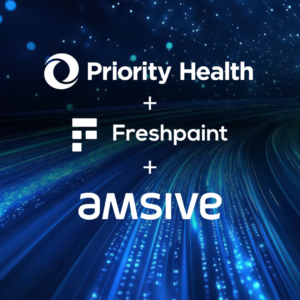Google’s algorithm has undergone seismic shifts in the past 2 years. Particularly for Your Money Your Life (YMYL) websites with medical, legal, or financial content, the algorithms have caused massive spikes and tanks in traffic, sometimes reversing course after each update.
Below is an example of what some of these fluctuations have looked like for a medical website, with black dots indicating when Google’s core updates rolled out.

For sites that have seen traffic declines as a result of algorithm updates, recovery can be extremely challenging, and in some cases, the site may not ever be able to obtain prior levels of traffic.
What does Google say to do about recovering from core updates? Is recovery possible?
Short answer: Google says there is nothing you can do to recover from core updates.
According to Google, there’s no quick fix that allows sites to see a quick recovery. Google recommends that webmasters don’t go trying to “mistakenly try to change things that aren’t issues.”
Sometimes, we make broad changes to our core algorithm. We inform about those because the actionable advice is that there is nothing in particular to “fix,” and we don’t want content owners to mistakenly try to change things that aren’t issues…. https://t.co/ohdP8vDatr
— Google SearchLiaison (@searchliaison) October 11, 2018
However, saying that there is no way to recover from core updates a big oversimplification.
It is possible to recover from core updates, but recovery takes significant time, effort, and patience.
Sometimes, the recovery is not seen until a subsequent update rolls out – or even until several updates go by.
Here is an example of a client of ours who was affected by each core update starting on August 1st, 2018, only to see a recovery starting to take effect when the September 2019 core update rolled out.

Is addressing E-A-T issues the silver bullet to recovery?
Many of the recent updates have generated a lot of discussion in the SEO community that issues related to E-A-T (expertise, authoritativeness, and trustworthiness) are the singular drivers of performance declines. However, E-A-T is not the only issue affecting sites, and E-A-T is not necessarily important to every site. Learn more about E-A-T and the role it plays in algorithm updates.
Here are 10 strategies websites can use to recover if they have been hit by a Google core algorithm update.
1. Leverage Real Expertise
One common recommendation for improving E-A-T is to ensure all authors have associated bios either alongside their byline in the article, on a dedicated author biography page. While this is a great recommendation to improve transparency around who your authors are, it’s not an inherent ranking factor. What’s even more important is ensuring that your content – particularly YMYL content – is written with the help of real experts.
Many of the winning websites leverage expert reviewers, such as doctors, psychologists, or nurses to audit content and ensure it is accurate. While using expert reviewers is also not any kind of confirmed ranking factor by Google, it enhances your content by making it inherently more accurate and therefore trustworthy.

2. Minimize Aggressive Ads
Recently at Pubcon Las Vegas, someone in the audience asked Gary Illyes from Google if aggressive advertising could cause your site to see performance declines with SEO. Gary confirmed that the Page Layout algorithm is still in effect, which was a 2012 update by Google that devalued sites using too many ads above the fold or an otherwise distracting ad implementation.
Ensure your ads are not making it hard to find the actual main content on the page, and pay attention to ads-vs-content proportions above the fold on desktop as well as mobile experiences.
3. Implement Trust Signals
One major takeaway from our E-A-T research is that the winning sites often display clear trust signals, such as how many awards they’ve won, an Honcode certification, or other reasons they should be trusted as a brand.
For example, the pregnancy-related publication What to Expect includes a list of recent awards it has won, which shows the user they are investing in their digital presence and the quality of their product. If you have won recent awards, display those on your website!

4. Use Editorial Policies and Ad Disclosures
Sites that are transparent with their users and clear about the purpose of their website tend to do better in organic search. This is why maintaining clear editorial and/or advertising policies to tell users exactly how your content is edited, who writes for you, what types of ads will be displayed, and how those ads are selected, are all good practices to make users feel they can trust your content.
Take the example of the “Ad and Sponsorship Policy” on Healthline, who has seen major increases in traffic since the August 1st core algorithm update and subsequent core updates:

5. Improve Content Quality
It’s no coincidence that most of the winners of Google’s algorithm updates maintain the highest level of content quality – particularly for YMYL content.
Content should be thoroughly researched, unbiased, well-edited, and should contain citations to trusted publications. Also, ensure that these external links are followed for SEO purposes, as it helps Google draw connections between your content and the sites from which you source your information.
Looking at Medical News Today, here is an example of the high-quality editorial standards they use throughout their articles:

6. Audit Content Accuracy and Scientific/Medical Consensus
Warning: this section is controversial, but it is pulled directly from Google’s guidelines.
Including content on your YMYL pages that directly contradicts scientific, medical, or historical consensus puts you in dangerous territory with Google. In Google’s Search Quality Guidelines, Google mentions the word “consensus” 20 times and suggests that content contradicting consensus should be rated “Fails to Meet” – the lowest possible quality rating.

This appears to be the case for a number of natural medicine doctors whose content contradicts that of more “trusted” publications such as the Mayo Clinic, or WebMD. Below are some examples of these sites, their performance over the past several core updates and examples of the keywords for which they have seen declines.

By looking at the pages for which these sites previously ranked for the above keywords, there is a clear pattern of their content directly contradicting the advice provided by mainstream medical institutions
7. Avoid Overly Salesy Language
It is important to avoid blending informational and transactional language on YMYL pages intended to provide advice or information. For example, a page about “rosacea” should not encourage the user to buy the author’s book as a treatment for rosacea.
This blend of informational content with a call-to-action can cause the user to distrust the other information provided on the page. It was also one of the strongest correlations we found in our research between losing websites and elements on their page: losing sites are 433% more likely than winners to have calls to action on pages containing medical content.

8. Resolve Technical Issues
Addressing E-A-T, content quality, and user experience are all crucial for recovery after algorithm-related performance declines, but technical SEO cannot be ignored. If Google has trouble crawling, indexing and/or rendering your content, all of your other efforts can be futile.
Some opportunities for improving your technical SEO after a core update:
- Check the coverage report in Google Search Console for issues with crawlability and indexation
- Make sure your site does not struggle with systemic page speed issues that can bring down its overall usability
- Ensure there are no AMP errors, which can also be monitored in Google Search Console
- Make sure your pagination setup is not inherently broken
- Always check your Google Search Console messages to ensure your site does not have a manual action
9. Noindex (or Remove) Low-Quality Content
In a recent Webmaster Hangout, John Mueller was asked if having a section of low-quality content can potentially bring down the overall quality of the domain, to which John responded yes.
If there is a section of your site that is low-quality in nature, such as thin, duplicated, or autogenerated content, consider removing or noindexing that section of the site.
10. Check for a Local Intent in the SERPs
A good step for recovering from core updates is to take a look at the search results for your query and make sure the keywords you previously thought were “generic” are not now being classified as “local” in intent. For example, the keyword “mattresses” shown below shows several indications that Google is looking for local results.
If you see a map pack, city names, and localized pages ranking, it’s a strong indication that you will also need a strategy to perform for that query.

For more information, check out my presentation from SMX East on recovering from core updates:
[slideshare id=192891534&doc=smxeast-recoveringfromcoreupdates-october2019-191112222318]







